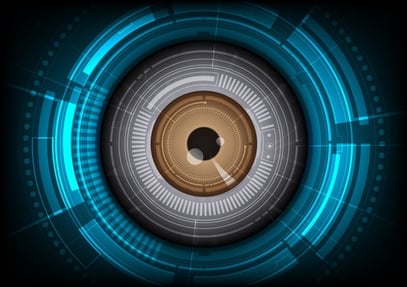
Many attribute the birth of biometrics to the city center of London, where lead investigators used body measurements and fingerprints to identify criminals, but in actuality, the first person to capture hand prints for identification was an employer named Sir William Herschel. Upon hire, Sir Herschel's employees would press their painted hand against the back of their contract. Come payday, the paymaster would compare the hand print of the person collecting their wages to the hand print on the contract. This elegant but simple system prevented fraud and provided a layer of protection for the employees.
Biometrics has come a long way since Sir Herschel's day, but its importance continues. The future of biometrics is as exciting as it is lucrative. These are just four of the coming changes to industry and biometrics.
Wider Use of Biometric Technology
Until now, biometrics have largely been relegated to high risk sectors. Military and intelligence agencies have been using biometrics for decades, but your local grocery store or doctor's office may have just recently moved beyond paper timestamps. Biometric technology is rapidly catching up and exceeding the functionality of automated time systems. The cost of both systems are equalizing and biometrics offer employers the added incentive of preventing the high cost of buddy punching. The future of biometrics will see the widespread use of biometric technology everywhere from supermarkets to banks to record more accurate time punches.
Increased Accuracy from Basic Biometrics
A challenge surrounding biometric technology has been the inaccuracy of early systems. While it may seem advantageous to eliminate employee badges in favor of hand scans, without accuracy, the system becomes a headache for employees and employers alike. As this technology has developed, the sensitivity has increased dramatically and continues to increase. The future of biometrics includes fingerprint and hand scans that are not only affordable, but highly accurate.
Greater Security Through Biometrics
The future of biometrics doesn't just focus on its ease of use, it also ensures greater security. Multi-step biometrics ensure that sensitive information doesn't make its way into the public sphere. Security systems that employ something you know (such as a password), something you carry (such as a key card), and something you are (such as a fingerprint or retinal scan), ensures greater security for the business. In sectors such as nuclear power and government security, these multi-step systems are already in place. As biometrics becomes more affordable, these systems will make their way into industries with tighter budgets but equally sensitive information.
Fewer Gadgets Required
No one leaves home without their smart phone, and the future of biometrics uses mobile technology to its advantage. Fingerprint scanning or voice recognition coupled with GPS technology ensures that the right employee is at the right place at the right time. The future of biometrics will use mobile devices to not only ease the burden on companies by reducing the amount of installed biometric devices in the workplace, but provide more flexibility to the employee. By using a personal mobile device, companies can employ a two-step security system without ever needing to issue a badge. Biometrics will continue to use personal mobile technology to provide faster, easier, and more cost-effective technology.
The future of biometrics is already here in many sectors, but as costs continue to drop and technology improves, biometrics will be a staple of business. By reducing buddy punching, increasing accuracy, and providing companies with greater security, beginning the transition to biometric technology in your workplace can ensure your employees are in on the ground floor of this technology and help your company save money and time now.
